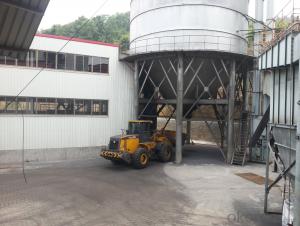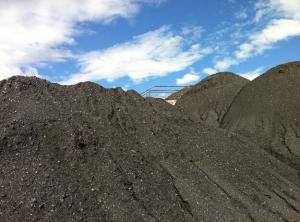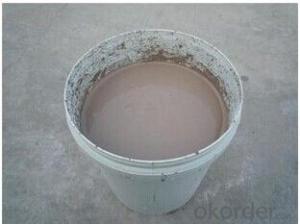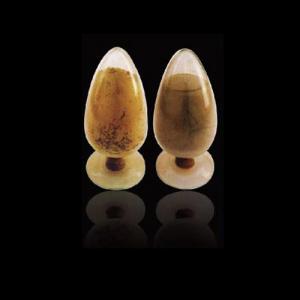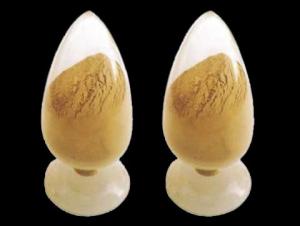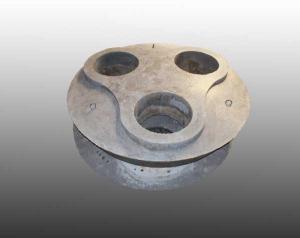Low Nitrogen Carbon Raiser Graphite Powder
- Loading Port:
- Shekou
- Payment Terms:
- TT or LC
- Min Order Qty:
- 20 m.t
- Supply Capability:
- 1000 m.t/month
OKorder Service Pledge
OKorder Financial Service
You Might Also Like
low nitrogen graphite petroleum coke
stable quality and supplying quantity
special steel, ductile iron and grey iron steel used carbon raiser
high carbon, low sulphur carbon raiser
punctual deivery carbon raiser
We are a leading graphite recarburizer manufacturer(graphite petroleum coke, graphite electrode scraps. graphite blocks, synthetic graphite scraps/powder, and carbon electrode paste ), reputed for reasonable price, superior and stable quality, on time delivery and professional service.
Calcined Petroleum Coke
FC:98.5%min,
S:0.5%max
A:0.8%max
V:0.7%max
Mositure:0.5%max
Size:1-5mm
We can also produce according to customers requirement, and please contact me with detailed requirement
This product is mainly used in steel-making and foundry. Calcined Petroleum Coke
Calcined Petroleum Coke comes from delayed coke which extracted from oil refinery. Although Calcined Petroleum Coke contains a little bit higher level of sulfur and nitrogen than pitch coke, the price advantage still makes it widely used during steel-making and founding as a kind of carbon additive/carburant.
Technology:
Laborary Equpment
In our lab,we has a high precision balance,mullfe furnace,sample making machine, dring box,sulfur measurement instrument and other calibratiing equipments.As a result,before deliverung to our customers,our products have to pass a strict test to ensure the quality and components.The testing reports will be sent to our customers to confirm untill they satisfy with it.
Packaging & Delivery
Packaging Detail:25kg paper bag into 1t weaving bag 5kg, 10kg and 20kg weaving bag into 1t weaving bag 25kg weaving bag put on pallet covered with entanglement wrap product direct into packing bag 25kg paper bag put on pallet covered with entanglement Wrap 25kg weaving bag into 1t weaving bag.
Delivery Details: 7 days


- Q:What are some common applications of monolithic refractories in the iron and steel industry?
- Monolithic refractories are widely used in the iron and steel industry due to their superior performance and versatility. Some common applications of monolithic refractories in this industry include: 1. Blast Furnace: Monolithic refractories are used in the lining of blast furnaces to withstand high temperatures and chemical reactions. They help in maintaining the structural integrity of the furnace and provide insulation against heat loss. 2. Ladle Lining: Monolithic refractories are used to line ladles, which are used for transferring molten iron or steel from the blast furnace to the steelmaking process. These refractories provide excellent resistance to thermal shock and erosion caused by the aggressive molten metal. 3. Tundish Lining: Tundish is an intermediate vessel used to distribute molten steel to multiple casting molds. Monolithic refractories are employed in the tundish lining to ensure proper thermal insulation and prevent contamination of the steel during casting. 4. Electric Arc Furnace (EAF): Monolithic refractories are used in the lining of EAFs to withstand the extreme temperatures and chemical reactions involved in the steelmaking process. They provide excellent resistance to high heat and erosion caused by the molten metal and slag. 5. Induction Furnace: Induction furnaces are used for melting and refining metals. Monolithic refractories are used in the lining of induction furnaces to provide insulation and protect the furnace structure from the high temperatures and chemical reactions occurring during the melting process. 6. Continuous Casting: Monolithic refractories are used in the lining of continuous casting machines to ensure smooth and consistent casting of molten steel. They provide excellent resistance to high temperatures, thermal shock, and erosion caused by the molten metal and slag. Overall, monolithic refractories play a crucial role in the iron and steel industry by providing durability, thermal insulation, and resistance to chemical reactions, thereby enhancing the overall efficiency and productivity of the manufacturing process.
- Q:What are the key properties of ramming mixes used for monolithic refractory installations?
- The key properties of ramming mixes used for monolithic refractory installations are: 1. High thermal stability: Ramming mixes should possess high thermal stability to withstand the extreme temperatures and thermal cycling in refractory applications. This property ensures that the ramming mix remains intact and does not undergo significant structural changes under varying thermal conditions. 2. High density: Ramming mixes need to have a high density to provide good resistance against thermal conductivity. This property helps in minimizing heat loss and maintaining the desired temperature in the refractory lining. 3. Low porosity: Low porosity is essential for ramming mixes as it helps in reducing the penetration of molten metals or slag into the refractory lining. This property enhances the overall durability and longevity of the refractory installation. 4. Good mechanical strength: Ramming mixes should possess good mechanical strength to withstand the stresses and loads encountered during installation, as well as during the operation of the refractory lining. This property ensures that the ramming mix can resist any physical or mechanical damage, such as cracking or spalling. 5. Chemical resistance: Ramming mixes should exhibit excellent resistance to chemical attack from molten metals, slag, or corrosive gases. This property is crucial for protecting the refractory lining from chemical reactions and degradation, which can compromise its performance and lifespan. 6. Easy installation and workability: Ramming mixes should have good workability, allowing for easy installation and compaction. This property ensures that the mix can be easily shaped and rammed into place without excessive effort or time, facilitating efficient and effective refractory installations. 7. Controlled setting time: Ramming mixes should have a controlled setting time to allow sufficient time for proper placement and consolidation. This property ensures that the mix remains workable during installation but sets and hardens within a reasonable time frame, allowing for timely completion of the refractory lining. In summary, the key properties of ramming mixes used for monolithic refractory installations include high thermal stability, high density, low porosity, good mechanical strength, chemical resistance, easy installation and workability, and controlled setting time. These properties collectively contribute to the overall performance, durability, and longevity of the refractory lining in various high-temperature applications.
- Q:Can monolithic refractories be used for the lining of ladle refining furnaces and VOD converters?
- Yes, monolithic refractories can be used for the lining of ladle refining furnaces and VOD converters. Monolithic refractories are versatile and can be shaped and installed easily, making them suitable for lining various types of furnaces and converters, including ladle refining furnaces and VOD converters.
- Q:What are the advantages of using insulating castables in the iron and steel industry?
- The advantages of using insulating castables in the iron and steel industry are numerous. Firstly, insulating castables have excellent thermal insulation properties, which help to reduce heat loss during the manufacturing process. This leads to increased energy efficiency and cost savings for the industry. Additionally, insulating castables have a low thermal conductivity, meaning they can withstand high temperatures without transferring excessive heat. This is crucial in the iron and steel industry, where temperatures can reach extremely high levels. By using insulating castables, the industry can ensure the longevity and durability of its equipment and structures. Furthermore, insulating castables have good resistance to thermal shock, meaning they can withstand rapid temperature changes without cracking or breaking. This is particularly beneficial in the iron and steel industry, where the heating and cooling processes are frequent and intense. Lastly, insulating castables have a low density, making them lightweight and easier to handle and install. This not only saves time and effort during installation but also reduces the structural load on equipment and structures. Overall, the use of insulating castables in the iron and steel industry offers advantages such as improved energy efficiency, enhanced durability, resistance to thermal shock, and ease of installation.
- Q:What are the limitations of monolithic refractories in high-temperature applications?
- Monolithic refractories are known for their versatility and ease of installation, making them popular in a variety of high-temperature applications. However, they do have certain limitations that need to be considered. Firstly, monolithic refractories have a limited thermal shock resistance. Rapid temperature changes, such as during startup or shutdown procedures, can cause thermal stress, leading to cracking or spalling. This can be a significant concern in applications where the refractory is subjected to frequent temperature fluctuations. Secondly, monolithic refractories have relatively lower mechanical strength compared to traditional brick or block refractories. This can result in reduced resistance to mechanical stress, such as abrasion or impact, particularly in high-temperature environments. Therefore, they may not be suitable for applications with high mechanical loading or abrasive conditions. Another limitation of monolithic refractories is their susceptibility to chemical attack. Certain aggressive chemical environments can cause chemical reactions with the refractory material, leading to deterioration or corrosion. This can be a concern in applications involving acidic or alkaline substances, where special refractory materials may be required. Furthermore, monolithic refractories can have a higher susceptibility to spalling or erosion caused by thermal cycling. The repeated expansion and contraction of the refractory material due to temperature changes can lead to the formation of cracks or gaps, making them more prone to erosion from gases or liquids. This limitation should be carefully considered in applications where long-term durability is essential. Lastly, monolithic refractories can be challenging to repair or replace compared to brick or block refractories. Once installed, it can be difficult to remove and replace a monolithic lining, especially in complex shapes or confined spaces. This limitation can result in longer downtime or increased costs for maintenance or repairs. In summary, while monolithic refractories offer several advantages in high-temperature applications, they also have limitations in terms of thermal shock resistance, mechanical strength, chemical resistance, erosion, and repairability. These limitations should be carefully evaluated to ensure the suitability of monolithic refractories for specific application requirements.
- Q:What are the cost implications of using monolithic refractories in the iron and steel industry?
- The use of monolithic refractories in the iron and steel industry can have various cost implications. Firstly, the initial cost of monolithic refractories tends to be higher compared to traditional brick refractories. Monolithic refractories are typically made from high-quality raw materials and require specialized installation techniques, leading to higher upfront expenses. However, these higher upfront costs can be offset by the benefits provided by monolithic refractories in terms of performance, durability, and reduced maintenance requirements. One of the major cost implications of using monolithic refractories is their extended service life. Monolithic refractories have excellent thermal shock resistance and can withstand high temperatures, mechanical stress, and corrosive environments. This results in reduced downtime and fewer replacement or repair needs, leading to overall cost savings in the long run. Additionally, monolithic refractories offer flexibility in design and application. They can be easily shaped and installed to fit complex geometries, resulting in optimized furnace linings and improved energy efficiency. By minimizing heat loss, monolithic refractories can reduce fuel consumption and lower energy costs for the iron and steel industry. Furthermore, the installation and maintenance of monolithic refractories can be less labor-intensive compared to brick refractories. This can result in reduced labor costs and shorter installation time, leading to potential cost savings for the industry. Another cost implication of using monolithic refractories is their impact on productivity. Monolithic refractories provide improved thermal insulation, reduced slag adhesion, and enhanced resistance to wear and erosion. These properties can lead to increased production rates, improved product quality, and minimized process interruptions, ultimately translating into higher profitability for iron and steel manufacturers. It is important to note that the cost implications of using monolithic refractories can vary depending on the specific application, furnace type, and operating conditions. Therefore, a thorough cost-benefit analysis should be conducted to evaluate the overall economic impact of implementing monolithic refractories in the iron and steel industry.
- Q:How do monolithic refractories contribute to energy efficiency in the iron and steel industry?
- Monolithic refractories play a crucial role in enhancing energy efficiency in the iron and steel industry through various mechanisms. Firstly, these materials have excellent thermal insulation properties, which helps in minimizing heat loss from the furnaces and other high-temperature equipment. By reducing heat loss, monolithic refractories ensure that the heat generated during the iron and steel production process is efficiently utilized, leading to significant energy savings. Furthermore, monolithic refractories exhibit superior thermal shock resistance, allowing them to withstand rapid temperature changes without cracking or spalling. This property is particularly important in the iron and steel industry, where the furnaces and other equipment are subjected to extreme temperature variations. By maintaining structural integrity even under such conditions, monolithic refractories prevent heat leakage and ensure that the energy input is effectively utilized. Moreover, these refractories also contribute to energy efficiency by reducing downtime and improving operational efficiency. Monolithic refractories are known for their easy installation and repair, resulting in shorter maintenance and repair cycles. This minimizes the downtime required for furnace maintenance, allowing for continuous operation and uninterrupted energy utilization. Additionally, the high durability of monolithic refractories reduces the need for frequent replacements, further enhancing energy efficiency by reducing material and energy waste associated with regular repairs. In conclusion, monolithic refractories significantly contribute to energy efficiency in the iron and steel industry by minimizing heat loss, withstanding thermal shocks, and reducing downtime. These materials ensure that the energy input in the production process is effectively utilized, resulting in substantial energy savings and improved operational efficiency.
- Q:How do monolithic refractories perform in reheating furnace applications?
- Monolithic refractories are highly effective in reheating furnace applications due to their exceptional thermal stability, strength, and resistance to thermal shock. These refractories are designed to withstand high temperatures, rapid temperature changes, and harsh operating conditions commonly found in reheating furnaces. One of the key advantages of monolithic refractories in reheating furnace applications is their ability to provide a seamless lining. Unlike traditional brick refractories, which require extensive installation and joints, monolithic refractories can be easily applied as a single, homogeneous layer. This eliminates the risk of thermal stress and cracking at joints, ensuring a more reliable and durable lining. Additionally, monolithic refractories offer excellent thermal insulation properties, which help to conserve energy and reduce heat loss in the reheating furnace. This not only improves the overall efficiency of the furnace but also reduces operational costs. Moreover, monolithic refractories exhibit high mechanical strength, allowing them to withstand the mechanical stress and abrasion caused by the movement of the furnace charge. They also have good resistance to chemical attack from gases, slags, and molten metals commonly encountered in reheating furnace operations. Furthermore, monolithic refractories can be easily repaired or patched, minimizing downtime and ensuring continuous furnace operation. Their ability to be easily shaped and molded to fit various furnace geometries also makes them highly versatile and adaptable to different reheating furnace designs. Overall, monolithic refractories offer exceptional performance in reheating furnace applications by providing superior thermal stability, strength, and resistance to thermal shock. Their seamless lining, thermal insulation properties, and resistance to mechanical and chemical stress make them an ideal choice for ensuring reliable and efficient furnace operation.
- Q:How do monolithic refractories improve the quality and consistency of iron and steel products?
- Monolithic refractories enhance the quality and consistency of iron and steel products by providing excellent resistance to high temperatures, thermal shock, and chemical attacks. These refractories form a seamless lining within the furnaces and other equipment used in the production process, ensuring optimal insulation and minimizing heat loss. This insulation helps in maintaining stable and controlled temperatures, preventing unwanted variations that can affect the final product's quality. Additionally, monolithic refractories' durability and resistance to wear and tear contribute to consistent and reliable performance, resulting in improved iron and steel product quality.
- Q:How are monolithic refractories used in the repair and maintenance of ladle and tundish linings?
- Monolithic refractories, widely utilized in the steel industry, are a specific type of refractory material employed for the repair and maintenance of ladle and tundish linings. These linings, integral to the transportation and treatment of molten metal during the steelmaking process, can deteriorate over time when exposed to high temperatures and corrosive conditions. This deterioration poses various issues, including heat loss, contamination of the molten metal, and reduced lifespan of the refractory lining. To tackle these problems, monolithic refractories serve as effective repair and maintenance materials. Typically composed of different refractory aggregates, binders, and additives, monolithic refractories are available in various forms like castables, gunning mixes, and ramming mixes. These materials are designed for easy application and shaping, conforming to the specific geometry and dimensions of the ladle or tundish lining. During the repair process, damaged sections of the lining are removed, and monolithic refractories are then applied. Castables can be poured and vibrated into place, while gunning mixes can be sprayed using a high-pressure gunning machine. On the other hand, ramming mixes are manually compacted into the lining using a ramming tool. Monolithic refractories offer several advantages when it comes to the repair and maintenance of ladle and tundish linings. Firstly, their flexibility ensures easy installation and shaping, resulting in a snug fit to the lining. This maximizes the effectiveness of the refractory lining in preventing heat loss and maintaining the integrity of the ladle or tundish. Secondly, monolithic refractories exhibit exceptional resistance to thermal shock and chemical attack. This durability enables them to withstand the harsh conditions encountered in ladles and tundishes. Even when subjected to repeated heating and cooling cycles, they remain intact without cracking or spalling, providing long-lasting protection to the lining. Lastly, monolithic refractories can be easily repaired and replaced as needed. The application and removal processes are relatively straightforward, facilitating efficient maintenance of ladle and tundish linings. This minimizes downtime and ensures the overall productivity of the steelmaking process. In conclusion, monolithic refractories play a vital role in the repair and maintenance of ladle and tundish linings. Their easy application, exceptional resistance to thermal shock and chemical attack, and ease of repair make them ideal materials for extending the lifespan and optimizing the performance of these linings in the steel industry.
1. Manufacturer Overview |
|
|---|---|
| Location | |
| Year Established | |
| Annual Output Value | |
| Main Markets | |
| Company Certifications | |
2. Manufacturer Certificates |
|
|---|---|
| a) Certification Name | |
| Range | |
| Reference | |
| Validity Period | |
3. Manufacturer Capability |
|
|---|---|
| a)Trade Capacity | |
| Nearest Port | |
| Export Percentage | |
| No.of Employees in Trade Department | |
| Language Spoken: | |
| b)Factory Information | |
| Factory Size: | |
| No. of Production Lines | |
| Contract Manufacturing | |
| Product Price Range | |
Send your message to us
Low Nitrogen Carbon Raiser Graphite Powder
- Loading Port:
- Shekou
- Payment Terms:
- TT or LC
- Min Order Qty:
- 20 m.t
- Supply Capability:
- 1000 m.t/month
OKorder Service Pledge
OKorder Financial Service
Similar products
New products
Hot products
Related keywords
